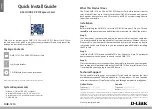
50
What is MIDI?
MIDI (an acronym for the Musical Instrument Digital Interface) is a hard-
ware and software specification that allows electronic musical instruments
and a wide variety of related equipment (such as personal computers) to
communicate with each other. MIDI carries information that describes a
performance rather than sound. Think of it as being the modern equivalent
of the player piano roll: the roll itself is just paper with holes punched in it,
but, played back on the proper instrument, the holes (which represent a
performance) are turned into music.
In MIDI, the holes are messages that indicate when a note has been played
(indicated by a Note On message), which note it was (indicated by a MIDI
note number), and how hard it was played (indicated by a velocity value).
There are 128 possible notes in MIDI, which translates to nearly an 11-
octave range. Other messages carry gestural information from continuous
controllers (such as pitch bend or sustain switch), timing information for
synchronizing systems, or program change information that tells an instru-
ment which of its sounds to use.
Just as your television set has different channels to carry separate pro-
grams, MIDI uses a system of 16 channels to allow a number of instru-
ments to be independently controlled. Unlike television channels, how-
ever, the only difference between MIDI channels is a number carried in the
first byte of most MIDI messages. This means that information for all 16
channels can be simultaneously carried on a single cable.
Personal computers came into being around the same time as MIDI, which
was no accident, since it was the development of microprocessors that
enabled both to happen. Personal computers can record, play back, and
perform sophisticated manipulations of MIDI data. A personal computer
is used to record information about a performance and can even be used to
simplify the programming of sounds on a synthesizer. Recorded MIDI data
can be stored in a Standard MIDI File (SMF) format which, in Windows
95, is called a MID file.
A
APPENDIX
MORE ABOUT MIDI
A














































